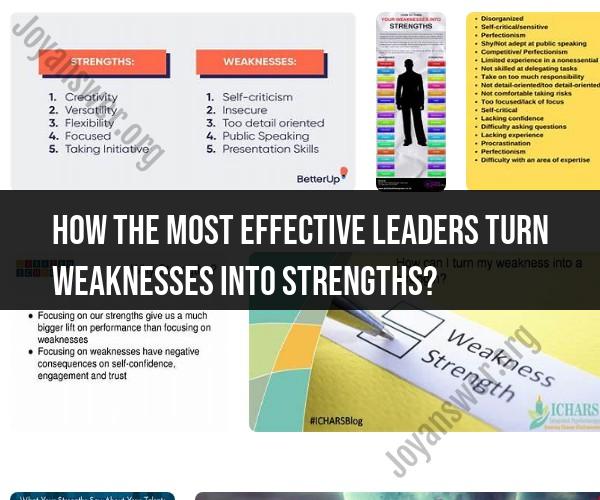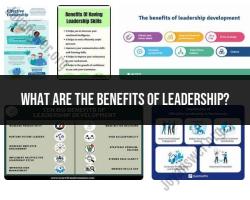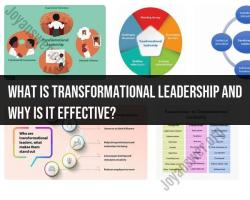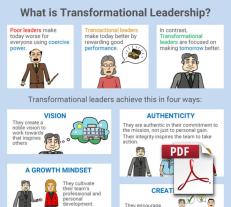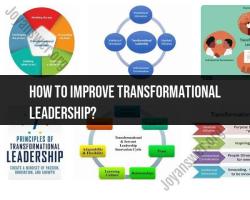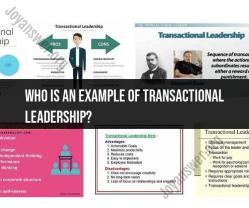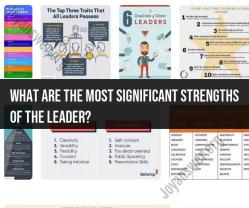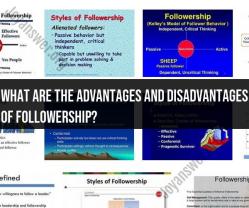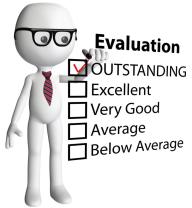How the most effective leaders turn weaknesses into strengths?
Effective leaders often have the ability to identify their weaknesses and transform them into strengths or mitigate their impact. Here are some strategies that the most effective leaders use to turn weaknesses into strengths:
Self-Awareness: The first step in turning weaknesses into strengths is self-awareness. Effective leaders recognize their weaknesses, acknowledge them, and are willing to address them.
Seek Feedback: Effective leaders actively seek feedback from colleagues, team members, mentors, or coaches. Feedback provides valuable insights into areas that need improvement.
Embrace Vulnerability: Leaders who embrace vulnerability are more approachable and relatable. They are not afraid to admit their weaknesses, which can build trust and foster open communication within their teams.
Continuous Learning: Effective leaders are committed to lifelong learning. They invest in their personal and professional development to improve skills and overcome weaknesses.
Delegate Strategically: Leaders recognize that they can't be experts in everything. They delegate tasks and responsibilities to team members who excel in areas where the leader may have weaknesses.
Mentorship and Coaching: Seeking guidance and mentorship from experienced leaders or coaches can help leaders develop strategies to address weaknesses. These mentors can provide valuable insights and advice.
Set Clear Goals: Effective leaders set clear, specific, and achievable goals to improve in areas where they have identified weaknesses. This helps them stay focused and motivated.
Collaboration: Effective leaders understand the power of collaboration. They partner with team members or colleagues who complement their weaknesses with their strengths. This results in a well-rounded team.
Develop Emotional Intelligence: Leaders who struggle with interpersonal skills or emotional intelligence work to develop these abilities. Emotional intelligence is a key leadership strength that can be learned and improved over time.
Adaptability: Effective leaders are adaptable and open to change. They are willing to adjust their leadership style and strategies to address their weaknesses and the changing needs of their team or organization.
Problem-Solving Skills: Leaders can work on improving their problem-solving skills. This includes identifying the root causes of their weaknesses and developing strategies to address them effectively.
Perseverance: Transforming weaknesses into strengths is not always quick or easy. Effective leaders exhibit perseverance and determination, knowing that improvement takes time.
Celebrate Progress: Leaders acknowledge and celebrate their progress in addressing weaknesses. Recognizing small victories and milestones along the way can be motivating.
Lead by Example: Leaders who openly address their weaknesses and strive for improvement set an example for their teams. This can inspire team members to do the same and create a culture of growth and development.
Measure and Reflect: Effective leaders regularly measure their progress in overcoming weaknesses and reflect on their development. This reflection allows for adjustments and refinements in their approach.
Positive Mindset: A positive mindset is essential in overcoming weaknesses. Effective leaders focus on their strengths and maintain a positive attitude even when addressing weaknesses.
In summary, the most effective leaders turn weaknesses into strengths through self-awareness, continuous learning, seeking feedback, and a commitment to growth. They understand that leadership is not about being perfect but about continually improving and adapting. By embracing vulnerability, setting clear goals, and collaborating with others, they build their leadership capabilities and create a more well-rounded and successful leadership style.
Transforming Weaknesses into Leadership Strengths: An Overview
Every leader has weaknesses. The key to success is not to eliminate them entirely, but to learn how to manage and leverage them in a way that benefits yourself and your team.
There are a number of ways to transform weaknesses into leadership strengths. One approach is to reframe your weaknesses as opportunities for growth and development. For example, if you are shy, you can view this as a chance to develop your public speaking skills. Or, if you are disorganized, you can focus on developing your time management and planning skills.
Another approach is to find ways to compensate for your weaknesses. For example, if you are not a strong writer, you can partner with someone who is. Or, if you are not a good delegator, you can learn how to more effectively assign tasks to your team members.
Finally, you can also turn your weaknesses into strengths by using them to connect with your team members on a deeper level. For example, if you have a history of overcoming adversity, you can share your story to inspire others. Or, if you are a self-deprecating person, you can use your sense of humor to put people at ease.
Strategies and Approaches for Leveraging Weaknesses
Here are some specific strategies and approaches for leveraging your weaknesses as a leader:
- Identify your weaknesses. The first step is to be honest with yourself about your weaknesses. Once you know what your weaknesses are, you can start to develop a plan for addressing them.
- Accept your weaknesses. No one is perfect. Everyone has weaknesses. It's important to accept your weaknesses and not try to be someone you're not.
- Develop a plan for addressing your weaknesses. Once you know what your weaknesses are, you can start to develop a plan for addressing them. This may involve developing new skills, finding ways to compensate for your weaknesses, or simply learning to accept your weaknesses and work around them.
- Be transparent with your team. It's important to be transparent with your team about your weaknesses. This will help to build trust and create a more supportive work environment.
- Use your weaknesses to connect with your team. Your weaknesses can also be used to connect with your team members on a deeper level. For example, if you are a recovering perfectionist, you can share your story to inspire others who are struggling with perfectionism.
Real-Life Examples of Leaders Who Turned Weaknesses into Assets
Here are a few real-life examples of leaders who turned their weaknesses into assets:
- Steven Spielberg is a successful filmmaker who is known for his perfectionism. However, his perfectionism can also be a weakness. For example, he is known for re-shooting scenes multiple times until he gets them exactly right. However, Spielberg has learned to leverage his perfectionism to his advantage. He uses it to ensure that his films are of the highest quality.
- Richard Branson is a successful entrepreneur who is known for his dyslexia. However, his dyslexia can also be a weakness. For example, he has difficulty reading and writing. However, Branson has learned to leverage his dyslexia to his advantage. He uses it to see the world from a different perspective and to come up with creative ideas.
- Oprah Winfrey is a successful talk show host and businesswoman who is known for her childhood trauma. However, her childhood trauma can also be a weakness. For example, she can be insecure and have difficulty trusting people. However, Winfrey has learned to leverage her childhood trauma to her advantage. She uses it to connect with her audience on a deeper level and to inspire others who have overcome adversity.
Building Resilience and Adaptability as a Leader
Building resilience and adaptability are essential for leaders who want to be successful in the long term. The world is constantly changing, and leaders need to be able to adapt to change and overcome challenges.
One way to build resilience and adaptability is to develop a growth mindset. This means believing that you can learn and grow, even when you face challenges. Leaders with a growth mindset are more likely to persevere in the face of setbacks and to learn from their mistakes.
Another way to build resilience and adaptability is to develop a strong support system. This could include mentors, colleagues, or friends who can offer support and guidance. Having a strong support system can help leaders to stay motivated and to bounce back from setbacks.
The Long-Term Benefits of Addressing and Utilizing Weaknesses in Leadership
There are a number of long-term benefits to addressing and utilizing weaknesses in leadership.
First, it can help you to become a more effective leader. When you are aware of your weaknesses and you are taking steps to address them, you are more likely to be able to lead your team to success
